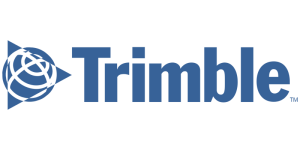How to optimize content for Google’s BERT algorithm in 2024?
In the ever-evolving landscape of search engine optimization, staying ahead of the curve is paramount for any business aiming to capture the digital limelight. With the introduction of Google’s BERT (Bidirectional Encoder Representations from Transformers) algorithm, the rules of the SEO game have shifted once more, emphasizing the importance of understanding and leveraging the nuances of natural language processing to rank effectively. As we navigate through 2024, businesses and content creators must adapt their strategies to appease BERT’s sophisticated mechanisms for a shot at dominating search engine results pages (SERPs).
Enter JEMSU, a digital advertising agency at the forefront of the SEO revolution, expertly guiding businesses through the complexities of Google’s algorithms. At JEMSU, we believe that optimizing content for BERT isn’t just about integrating keywords but about crafting a user experience that resonates with both the algorithm’s intelligence and the searcher’s intent. To thrive in this BERT-centric SEO era, one must create content that is not only informative but also contextually rich and conversationally relevant.
In this introduction, we’ll explore the intricacies of BERT and provide actionable insights from JEMSU’s wealth of knowledge in search engine marketing. Whether you’re a burgeoning startup or an established enterprise, understanding how to fine-tune your content to align with BERT’s expectations is crucial for your online success. With JEMSU’s expertise, you’ll be equipped to navigate the complexities of BERT, ensuring your content strategy is both future-proof and fully optimized for the search landscape of 2024 and beyond.
Table of Contents
1. Understanding Natural Language Processing (NLP) and BERT Fundamentals
2. Creating High-Quality, Relevant, and Informative Content
3. Focusing on User Intent and Search Context
4. Implementing E-A-T Principles (Expertise, Authoritativeness, Trustworthiness)
5. Using Structured Data and Schema Markup
6. Continuous Content Evaluation and Optimization Strategies
7. FAQs
Instant SEO Checker + Score & Report
Enter the URL of any landing page to see how optimized it is for one keyword or phrase...
Understanding Natural Language Processing (NLP) and BERT Fundamentals
Optimizing content for Google’s BERT algorithm requires a deep understanding of Natural Language Processing (NLP) and the fundamentals of BERT itself. BERT, which stands for Bidirectional Encoder Representations from Transformers, is a neural network-based technique for natural language processing pre-training. It was designed to better understand the nuances and context of words in search queries, effectively enabling Google to interpret the intent behind searches with a level of sophistication that was previously unattainable.
For a digital marketing agency like JEMSU, staying abreast of the latest developments in NLP and BERT is essential. The reason is simple: when JEMSU crafts content for clients, it’s not just about including keywords anymore. It’s about ensuring that the content responds to the specific, conversational queries that BERT is geared towards. This means that JEMSU’s content strategies are no longer just about what people are searching for, but how they are searching. The subtleties of human language, including the context within which a word is used, synonyms, and the order of words, are now more critical than ever.
For example, if a JEMSU client is in the health industry, the agency might optimize content by using language that aligns with the way people ask health-related questions in real life. Instead of focusing on rigid keywords like “symptoms of flu,” JEMSU would ensure the content also answers natural, conversational queries like “what does it mean if I have a headache and a sore throat?”
Statistics show that since the implementation of BERT, nearly one in ten search queries in English in the United States are interpreted differently by Google, which underscores the importance of understanding BERT for content optimization. This represents a significant portion of search traffic that could be won or lost based on how well content is optimized for NLP and BERT.
The analogy can be made that BERT treats words like stars in a constellation. While each star has its individual brightness and position, it’s the patterns and relationships between them that define what the constellation is. Similarly, BERT looks at the patterns and relationships between words to understand the broader meaning or intent of the search query.
JEMSU leverages this insight by ensuring that content is not only relevant and informative but also structured in a way that reflects natural speech patterns. This might involve crafting content that answers questions directly, uses complete sentences, and incorporates relevant context, which can help BERT understand the content’s relevance to specific queries.
In essence, optimizing content for BERT involves a strategic mix of linguistic savvy, technical know-how, and a keen understanding of the target audience’s search behavior. It’s a complex task, but one that JEMSU is well-equipped to handle for its clients.
Google Ads Success Example
The Challenge: The Challenge: Increase new dental patients with better Google Ads campaigns.
Creating High-Quality, Relevant, and Informative Content
In the realm of SEO, content is king, and with the introduction of Google’s BERT algorithm, this statement holds truer than ever. BERT, which stands for Bidirectional Encoder Representations from Transformers, is a neural network-based technique for natural language processing pre-training. It was designed to understand the nuances and context of words in search queries, aligning the results more closely with user intent.
For a company like JEMSU, it’s imperative to adapt to these changes by crafting content that resonates not just with search engines, but more importantly, with the audience. High-quality content is characterized by its ability to engage readers, provide valuable insights, and offer solutions to their problems. It’s the cornerstone of any successful SEO strategy, especially in the wake of BERT’s impact on search rankings.
Consider this analogy: if Google’s BERT is a voracious reader, then content is its favorite genre. BERT doesn’t just skim through pages looking for keywords; it dives deep into the narrative structure, seeking out themes, context, and character motivation. In the same way, when creating content, JEMSU focuses on the storyline of the brand, the needs and desires of the customer, and the overarching message that ties them together.
Statistics show that websites with comprehensive content have a higher likelihood of ranking well on search engine results pages (SERPs). A study by Backlinko found that the average Google first page result contains 1,447 words. This suggests that detailed and thorough content typically outperforms shorter, less informative content. Consequently, JEMSU integrates this insight into its content creation process, producing rich and in-depth material that captures the full spectrum of a topic.
One example of JEMSU’s commitment to quality is the production of articles that not only answer a question but also provide examples, case studies, and actionable tips. Instead of merely explaining what SEO is, JEMSU’s content might include a step-by-step guide on how to conduct keyword research or optimize meta tags, accompanied by real-life results from their own client campaigns. This approach not only aids in satisfying BERT’s hunger for context but also positions JEMSU as an industry leader in the eyes of the reader.
To summarize, optimizing content for Google’s BERT algorithm requires a shift towards more natural, user-focused writing. JEMSU understands that to truly thrive in the age of BERT, content must be well-researched, expertly crafted, and deeply aligned with the searcher’s intent. Each piece of content should be a treasure trove of information, one that BERT can readily recommend to users with the confidence that they will find exactly what they’re looking for.
Focusing on User Intent and Search Context
Understanding and focusing on user intent and search context is crucial in optimizing content for Google’s BERT algorithm. As we head into 2024, the sophistication of algorithms like BERT continues to evolve, making it increasingly important for digital marketing agencies like JEMSU to adapt their content strategies accordingly. BERT, which stands for Bidirectional Encoder Representations from Transformers, is a neural network-based technique for natural language processing pre-training. It is designed to understand the nuances and context of words in search queries.
When creating content, it’s essential to go beyond simply incorporating keywords. JEMSU emphasizes the importance of aligning the content with what users are actually seeking. This means interpreting the intent behind searches—whether informational, navigational, transactional, or commercial—and tailoring content to meet these needs. For instance, if the data shows a high volume of informational queries regarding digital marketing, JEMSU would focus on crafting comprehensive guides, detailed blog posts, and educational resources that answer those specific queries.
In the context of search, BERT is adept at deciphering the meaning of prepositions and other function words that can alter the intent behind a search query. A simple example can illustrate this: the search “digital marketing services for small businesses” versus “digital marketing services by small businesses” presents two different intents. In the first, users are looking for services offered to small businesses, while in the second, they seek services provided by small businesses. JEMSU recognizes this distinction and creates content that specifically addresses the unique intent of each query.
By analyzing search context, JEMSU can also identify the kind of content that will satisfy user needs. For instance, if a user searches for “how to optimize a website for SEO,” they are likely looking for a step-by-step guide rather than a high-level overview. Therefore, JEMSU would ensure the content not only covers the topic comprehensively but also provides actionable advice in an easy-to-follow format.
Analogous to a key fitting into a lock, content must match the user’s search intent to unlock the full potential of organic search traffic. As BERT and similar algorithms become even more intertwined with Google’s search engine, the ability to accurately interpret and fulfill user intent will be a significant determinant in the success of SEO efforts. JEMSU, by focusing on user intent and search context, helps ensure that their clients’ content remains relevant and effective in the ever-evolving landscape of search engine marketing.
SEO Success Story
The Challenge: The Challenge: Design an SEO friendly website for a new pediatric dentist office. Increase new patient acquisitions via organic traffic and paid search traffic. Build customer & brand validation acquiring & marketing 5 star reviews.
Implementing E-A-T Principles (Expertise, Authoritativeness, Trustworthiness)
In the realm of optimizing content for Google’s BERT algorithm, one of the pivotal strategies is the implementation of E-A-T principles, which stands for Expertise, Authoritativeness, and Trustworthiness. As a digital advertising agency, JEMSU recognizes the significance of establishing a strong E-A-T in content to satisfy not only the algorithm’s preferences but also to meet the users’ expectations for quality.
Expertise refers to the creator’s knowledge and proficiency in a specific field. To bolster expertise, JEMSU ensures that content is crafted by individuals who are well-versed in their respective niches or industries. This might involve featuring articles written by professionals with relevant qualifications or experience, which signals to Google and users that the information presented is credible and reliable.
Authoritativeness is the next pillar and it hinges on the reputation of the content creator and the website. JEMSU helps build authority by garnering positive reviews, citations from reputable sources, and backlinks from esteemed sites within the same industry. An example of this principle in action is when a renowned industry leader references a JEMSU blog post, which then functions as a vote of confidence in the eyes of both users and search engines.
Trustworthiness, the final principle, is crucial as it relates to the legitimacy and transparency of the website and its content. JEMSU upholds trust by ensuring that all content is fact-checked, sources are cited, and any potential conflicts of interest are disclosed. Moreover, secure website protocols, such as HTTPS, are employed to protect users’ privacy and data.
Analogous to a tripod, where each leg supports the structure, E-A-T principles together create a stable foundation for content that can perform well under the scrutiny of Google’s BERT. By focusing on these principles, JEMSU not only aims to improve search engine rankings but also to provide a superior user experience, which is ultimately the end goal of any optimization effort.
Jemsu has been a great asset for us. The results have grown at strong positive linear rate. They have been extremely accessible, flexible, and very open about everything. Natalya is a star example of how to work with your accounts to drive them forward and adjusts to their quirks. Jaime is able to clearly communicate all of the work that is being done behind the scenes and make sure that all of my team is understanding.
I couldn’t be more pleased with my JEMSU Marketing Team!
Julia, Tamara, Joelle and Dally have exceeded my expectations in professionalism, creativity, organization, and turn around time with my Social Media Management project.
I have thoroughly enjoyed sharing my journey with this team of empowered women!
Thank you JEMSU! Your team designed and launched my new website, and developed strategies to drive traffic to my site, which has increased my sales. I highly recommend your Website & SEO Agency!
Jemsu has always been professional and wonderful to work with on both the SEO and website design side. They are responsive and take the time to explain to us the complicated world of SEO.
Jemsu is an excellent company to work with. Our new website blows away our competition! Unique, smooth, and flawless. Definite wow factor!
The folks at JEMSU were excellent in designing and launching our new website. The process was well laid out and executed. I could not be happier with the end product and would highly recommend them to anyone.
Jemsu is a great company to work with. Two prong approach with a new site and SEO. They totally redesigned my website to be more market specific, responsive, and mobile friendly. SEO strategy is broad based and starting to kick in. My marketing will also be adding Facebook and Google ads in the coming weeks. Thanks for your all you hard work.
JEMSU has wworked with our team to create a successful campaign including incorporating an overall rebranding of our multiple solutions. The JEMSU team is embracing of our vision and responds timely with life of our ideas.
JEMSU is great company to work with. They listen & really work hard to produce results. Johnathan & Sasha were such a big help. If you have a question or concern they are always there for you.
I would definitely recommend them to anyone looking to grow their company through adwords campaigns.
Jemsu have exceeded our expectations across all of our digital marketing requirements, and I would recommend their services to anyone who needs expertise in the digital marketing space.
JEMSU was able to quickly migrate my site to a new host and fix all my indexation issue. I look forward to growing my services with JEMSU as I gain traffic. It’s a real pleasure working with Julian and Juan, they’re both very professional, courteous and helpful.
JEMSU is incredible. The entire team Is professional, they don’t miss a deadlines and produce stellar work. I highly recommend Chris, Rianne, and their entire team.
We’ve been working with JEMSU for about five months and couldn’t be happier with the outcome. Our traffic is up and our leads are increasing in quality and quantity by the month. My only regret is not finding them sooner! They’re worth every penny!
Using Structured Data and Schema Markup
In the dynamic world of SEO, where algorithms like Google’s BERT are increasingly sophisticated, using structured data and Schema markup has become essential for businesses aiming to enhance their online visibility. JEMSU recognizes the importance of this strategy in communicating with search engines more effectively. Structured data refers to any data that is organized and formatted in a predictable pattern, making it easier for search engines to crawl, understand, and display content in the search results.
Schema markup is a code (semantic vocabulary) that you put on your website to help search engines return more informative results for users. By implementing Schema markup, JEMSU helps websites speak Google’s language, directly benefiting from the BERT algorithm’s capability to understand the nuances of human language. For example, if JEMSU is optimizing a local business’s website, using Schema markup could result in rich snippets that highlight the business’s hours, location, and ratings directly in the search results, making the information immediately accessible to users.
According to a study by Moz, websites that use Schema markup tend to rank better by an average of four positions compared to those that don’t. This statistic underscores the tangible benefits of structured data in SEO. Moreover, when JEMSU employs Schema markup for a client’s product pages, it enables features like price, availability, and review ratings to appear in the SERP (Search Engine Results Page), thereby improving click-through rates.
An analogy to understand the role of structured data in the context of Google’s BERT algorithm is considering a librarian (BERT) who is tasked with organizing a library (the internet). Without structured systems like the Dewey Decimal Classification, the librarian would have a hard time placing and finding books. Similarly, without structured data, BERT struggles to properly index and serve up content to users.
JEMSU applies this concept by meticulously incorporating appropriate Schema types, such as ‘Article’, ‘Event’, or ‘Product’, depending on the content they are optimizing. This not only streamlines the indexing process for search engines but also enhances the user experience by delivering precise and relevant information in response to their queries. For instance, a well-structured recipe page may display cook time, ingredient lists, and nutritional information directly in search results, making it highly attractive for someone searching for a quick dinner idea.
In conclusion, as Google’s algorithms continue to evolve, JEMSU stays ahead of the curve by leveraging structured data and Schema markup to optimize content for better comprehension by BERT, thus ensuring that clients’ websites are understood, accurately indexed, and prominently displayed in search results.
SEO Success Story
The Challenge: Increase dent repair and body damage bookings via better organic visibility and traffic.
Continuous Content Evaluation and Optimization Strategies
At JEMSU, we understand that the digital landscape is perpetually evolving, especially with the introduction of sophisticated algorithms like Google’s BERT. As a result, one of the most critical aspects of content optimization is the commitment to continuous content evaluation and optimization strategies. It’s not enough to create content and let it sit untouched; it must be revisited and refined to maintain and enhance its relevance and effectiveness over time.
Continuous content evaluation is akin to tending a garden. Just as a gardener must regularly weed, water, and check the health of their plants, JEMSU approaches content with the same level of care and attention. We regularly audit content to identify areas that may have become outdated, or that no longer align with the latest user search behaviors and preferences. This ongoing process ensures that the content not only remains fresh but also continues to meet the high standards required by sophisticated algorithms like BERT.
In terms of optimization strategies, JEMSU leverages a variety of tools and techniques. One example is the use of analytics to track user engagement and content performance. By analyzing metrics such as bounce rate, time on page, and conversion rates, we gain insights into how well the content is resonating with the target audience. These stats are invaluable for informing the necessary adjustments to content strategy.
Furthermore, JEMSU places a strong emphasis on the importance of iterative improvements. Similar to software development, where updates are made continuously to improve performance and user experience, content must be updated to stay in line with evolving language models and search algorithms. It’s not uncommon for a piece of content to undergo multiple rounds of optimization before it hits its stride in search rankings—each iteration informed by previous performance data and the latest SEO best practices.
In conclusion, JEMSU’s approach to continuous content evaluation and optimization strategies is a testament to our commitment to excellence in search marketing. By staying proactive and adaptable, we ensure that our clients’ content remains at the forefront of search engine results, effectively addressing the demands of Google’s BERT algorithm in 2024 and beyond.
FAQS – How to optimize content for Google’s BERT algorithm in 2024?
1. **What is Google’s BERT algorithm?**
BERT (Bidirectional Encoder Representations from Transformers) is an algorithm update by Google meant to improve the understanding of the context of search queries. It helps Google’s search engine interpret the nuances and intent behind a user’s search.
2. **How does BERT affect content optimization?**
BERT influences content optimization by prioritizing well-written, conversational, and contextually relevant content. It encourages content creators to focus on creating content that answers user inquiries in a natural and comprehensive manner.
3. **What are the best practices for optimizing content for BERT?**
To optimize for BERT, you should:
– Write for humans first, search engines second.
– Use natural language and semantic richness.
– Focus on context and clarity.
– Provide in-depth, authoritative content.
– Use structured data to help Google understand the content.
4. **Does keyword density still matter for BERT?**
With BERT, keyword density becomes less important than context and relevance. It’s more beneficial to use keywords naturally rather than trying to achieve a certain density.
5. **How can I ensure my content is contextually relevant for BERT?**
Research your audience and their search intent thoroughly. Craft content that addresses their questions, pain points, and the context of their search queries.
6. **Can BERT affect the ranking of my older content?**
Yes, BERT can impact the ranking of existing content. It’s advisable to review and update older content to ensure it meets BERT’s emphasis on context and user-focused information.
7. **What role does E-A-T (Expertise, Authoritativeness, Trustworthiness) play in optimizing for BERT?**
E-A-T is crucial for BERT optimization as the algorithm favors content that demonstrates expertise, authoritativeness, and trustworthiness, especially for Your Money or Your Life (YMYL) topics.
8. **Should I use long-tail keywords for BERT optimization?**
Long-tail keywords can be beneficial because they often carry more context and specificity, which aligns with BERT’s focus on understanding the intent behind search queries.
9. **How do I measure the impact of BERT on my website’s traffic?**
Monitor your website analytics for changes in organic traffic and rankings. Look for patterns that suggest improvements or declines in performance for specific queries or pages.
10. **Will using AI content generation tools help with BERT optimization?**
AI content generation tools can help, but the content should be reviewed and possibly edited to ensure it aligns with BERT’s emphasis on quality, context, and user focus. Authenticity and human touch are still key.
Answers are based on the state of knowledge as of early 2023 and hypothetical advancements in BERT up to 2024. Keep in mind that search engine algorithms are continuously evolving, and so do the best practices for SEO and content optimization.
SEO Success Story
The Challenge: Increase new dental patients with better organic visibility and traffic.















